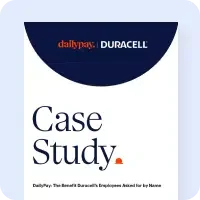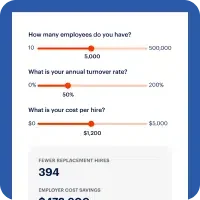Many businesses deploy a net promoter score (NPS) survey which is an index that measures the willingness of customers to recommend a company’s products or services to others. There is value in learning how others perceive your products and their loyalty to the brand, and companies often make fundamental changes based on patterns in the survey results.
As of 2006, and thanks in part to Fred Reichheld’s book ‘The Ultimate Question’, the employee net promoter score (eNPS) is quite popular too.
Rather than measuring how an external party feels about your organization, an eNPS is a system for measuring how willing employees are to recommend their workplace to friends and acquaintances.
Why eNPS is Important
Simply put, the eNPS measures employee loyalty, and employee loyalty is the lifeline of your organization.
Employee loyalty has an impact on customer experience and the overall contributions that shape the success of your business. For example, loyal employees:
- Are more productive within an organization
- Stay in a role longer for an organization
- Encourage top-line growth by providing high-quality support to clients/customers
On the flip side, disloyal employees have a significant fiscal impact on your organization. With weak or non-existent loyalty, your company can get caught in the vicious cycle of mass turnover and recruitment. Consider these expenses:
- Cost of hiring (advertising, interviewing, posting on job boards, etc.)
- Cost of training a new employee (including time lost by the trainer)
- Lost productivity
- Cost of mistakes made by a new employee
- Lost clients from dissatisfaction with your brand
Don’t overlook the fact that the United States is experiencing a historically competitive labor market, which makes it increasingly difficult to hire for vacant positions. In a typical hiring landscape, the average cost-to-fill is around $4,129, a tight labor market may inflate these costs.
As an organization, it’s imperative to focus on loyalty so you can reduce turnover, improve productivity, and increase applicant pools by word-of-mouth from your current employees should you need to recruit.
Setting the Benchmark With an eNPS
At its most basic breakdown, an eNPS is the act of asking your employees, “On a scale of 0-10, how likely are you to recommend this company as a place to work?” The responses are more than just a number though. The results reflect how employers are doing when it comes to cultivating a healthy workforce.
Ask yourself: What do you think the bulk of your employees say about their job? Do they like the company? Do they like their boss?
According to one study conducted by OfficeVibe, 59% of employees wouldn’t recommend their organization as a good place to work. An eNPS survey can help you change that.
DailyPay spoke with Libby Mullen, Learning & Development Manager at BizLibrary, a platform for online employee training and training reinforcement, about the importance of an eNPS survey. She said, “It is a quick and simple method – like a check of vital signs – to see the direction things are trending once a baseline has been established.”
An eNPS survey is one way to identify where you stand with your current workforce and learn how you can improve to optimize employee productivity and tenure — and your revenue.
How to Deploy an eNPS Survey
Mullen suggests a few tips when it comes to sending out an eNPS survey.
Her process looks like this:
- Email surveys out to all employees
- Market the existence of the surveys through various internal communications (email, chat, company-wide announcements, internal websites, etc.)
- Monitor the responses and send reminders to employees who did not submit their feedback.
- Consistently inspire employees to share their feedback
- When all results have been submitted, share the data with all employees
“Employees feel that they have a voice and that we care about their satisfaction when they are polled. Sharing the results of an eNPS with the employees at company meetings also provides an environment of transparency and trust,” said Mullen.
Mullen says BizLibrary shares their eNPS survey results with employees on a quarterly basis.
Pro tip: Typically, eNPS surveys are filled out anonymously so that the feedback is as genuine as possible.
How to assess your eNPS results
Each individual response will be on a scale of 0-10, the numbers describe the following:
- Promoters: answered 9-10 – Promoters are the most loyal segment who will enthusiastically recommend employment at a company.
- Passives: answered 7-8 – This group is not necessarily negative but is not entirely loyal either. They are neutral or passive.
- Detractors: answered 0-6 – This category defines those that are not likely to recommend employment at the company. The more detractors in a workplace, the more toxic the environment.
The formula for calculating your eNPS looks like this:
(Number of Promoters — Number of Detractors) / (Number of Respondents) x 100
So, if your company has:
- 50 people answered 9-10 (promoters)
- 25 people answered 6 or less (detractors)
- 25 people answered 7-8 (passives)
Your eNPS score would be:
(50 — 25) / (100) x 100 = eNPS score of 25.
Acting on your eNPS survey results
The eNPS score is a scale, so it’s not a passing or failing percentage. And many factors play into the overall scoring, so it’s difficult to compare eNPS between companies, or even departments. It’s impossible to determine “what a good score is.”
Instead, it’s what you do with the eNPS survey results.
As mentioned earlier, one way to measure your efforts is through change over time – give yourself a benchmark. It doesn’t particularly matter if a team or company starts on 10, 20 or 30 if they are moving upwards each time.
How to earn a higher eNPS
Mullen reminds us that this measure tells only part of the whole picture. She says, “The eNPS is an excellent way to establish a baseline measure and build from there to see how employee satisfaction is trending in the big picture. To get to the root of any issues takes deeper digging.”
In other words, every organization needs to get to the bottom of “why” you get detractors in the first place. To do this, Mullen suggests additional outreach, “Specific surveys, voluntary interviews, and anonymous employee feedback can pinpoint areas for improvement and areas that need to be maintained.”
How can you drill down on the precise areas that your employees are frustrated with?
One of our clients, Christian Horizons, recently went through this process. They had an issue with high turnover at their senior care facilities. Through employee polling, Christian Horizons discovered access to money was important to their employees. As a result of their findings, the organization created a program that incentivized select employees with bonuses. Though the program seemingly answered the employee’s needs, it failed.
Christian Horizons drilled down further to learn that yes, money was important to their staff, but it was actually faster access to it that their employees wanted.

As a result, Christian Horizons piloted DailyPay to re-engage and excite their employees, based on their feedback.
Over a four-month period, the company reported that the benefit reduced their turnover by 7.2%. And, month-over-month, the turnover continues to angle down. DailyPay estimates by the one-year mark, Christian Horizons will have saved $531,240 by reducing turnover and decreasing the number of new hires.
By taking time to gather employee feedback, analyzing the results, and following up, Christian Horizons was able to make a sizable impact on their bottom line.













